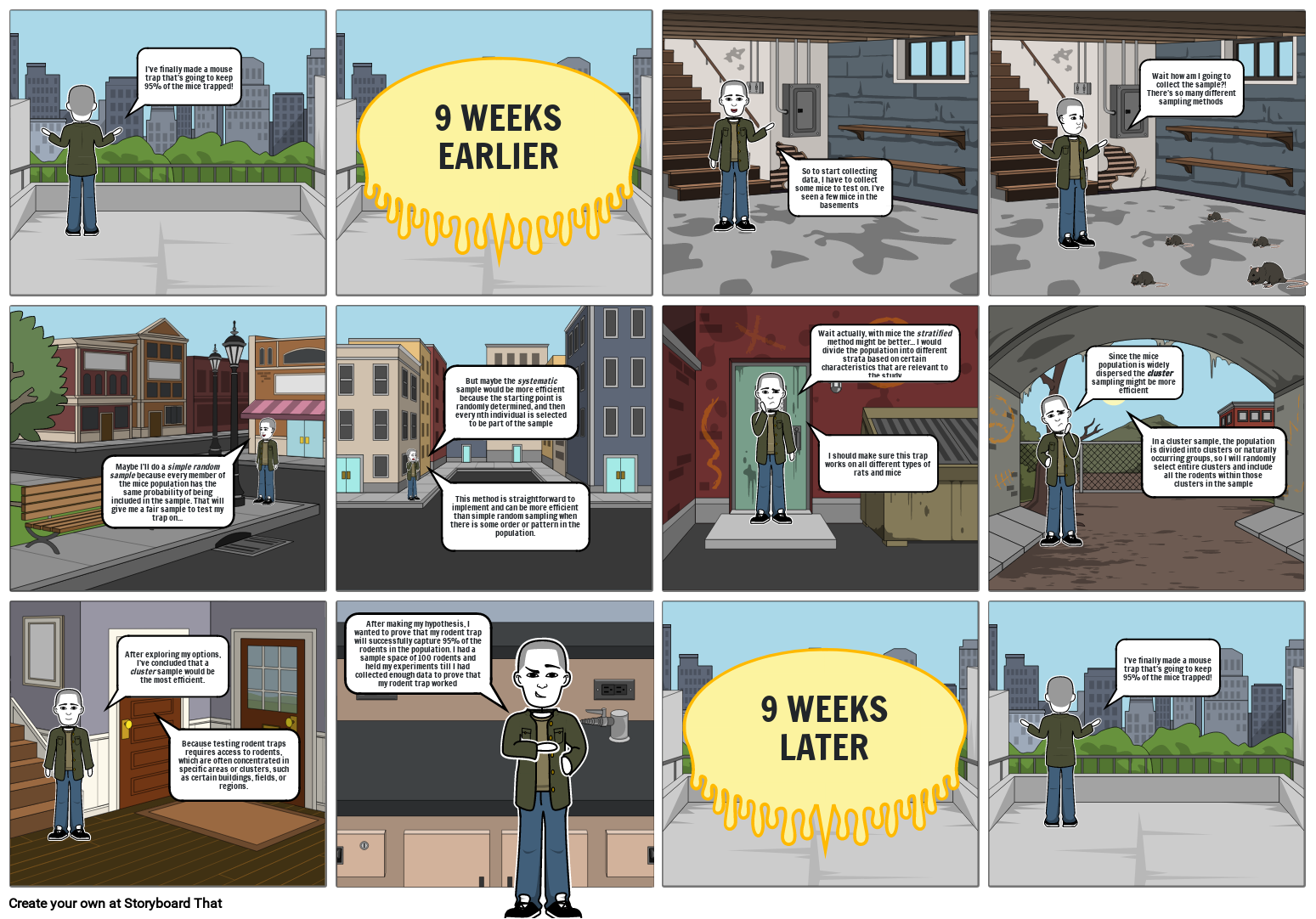Mouse Trap

Storyboard Text
- I've finally made a mouse trap that's going to keep 95% of the mice trapped!
- 9 WEEKS EARLIER
- So to start collecting data, I have to collect some mice to test on. I've seen a few mice in the basements
- Wait how am I going to collect the sample?! There's so many different sampling methods
- Maybe I'll do a simple random samplebecause every member of the mice population has the same probability of being included in the sample. That will give me a fair sample to test my trap on...
- This method is straightforward to implement and can be more efficient than simple random sampling when there is some order or pattern in the population.
- But maybe the systematic sample would be more efficient because the starting point is randomly determined, and then every nth individual is selected to be part of the sample
- Wait actually, with mice the stratified method might be better...I would divide the population into different strata based on certain characteristics that are relevant to the study
- I should make sure this trap works on all different types of rats and mice
- Since the mice population is widely dispersed the cluster sampling might be more efficient
- In a cluster sample, the population is divided into clusters or naturally occurring groups, so I will randomly select entire clusters and include all the rodents within those clusters in the sample
- After exploring my options, I've concluded that a clustersample would be the most efficient.
- Because testing rodent traps requires access to rodents, which are often concentrated in specific areas or clusters, such as certain buildings, fields, or regions.
Over 30 Million Storyboards Created
No Downloads, No Credit Card, and No Login Needed to Try!
